![]()

Maybe the most famous picture of the Paris Peace Conference, the "The Big Four" (27 May 1919) was taken by Edward N. Jackson, a photographer with the Army Signal Corps and Wilson's official photographer in Europe.
Edward Jackson (1885-1967) was born in Philadelphia in an Irish immigrant family. By the turn of the century, Jackson was already involved in the photography business, and by 1912 he was working in New York as a freelance news photographer. You could say that he was an early "paparazzo," stalking famous victims and looking for spectacular images. In 1913, he accepted an overseas freelance assignment to go to Panama to photograph the Panama Canal before its official opening in 1914.
Despite being pretty old when World War I broke out (30), Jackson ended up enlisting in the Army Signal Corps. Because of his photography background, he was assigned to duty as an official war photographer. Jackson spent almost a year photographing the battlefields of France and was awarded a battlefield promotion to the rank of captain. When President Wilson traveled to Europe for the Paris Peace Conference, Jackson was assigned directly to President Wilson’s party.
Upon his return to the United States after the peace conference, Jackson became the lead photographer for the newly-founded tabloid, the New York Daily News. Covering the news through the Roaring Twenties, the Great Depression, World War II, the Cold War, Jackson remained with the newspaper until his retirement in 1958.
Human history in its writing is fairly authentic – but I would offer that photographic history has an element of certainty about it that is indisputably authentic. The picture tells its own story – and proves it, is corroborative, and records details that are often lost in writing. Edward N. Jackson (1932)
There are some available web sources with some information about Edward Jackson.
- Edward Jackson (photographer) -- the Wikipedia entry
- Joseph Caro's website, www.edwardnjackson.com, which supports the author's forthcoming book on Eddie Jackson. The site has a number of pictures and detailed descriptions.
All of the photographs and documents listed below are provided courtesy Joseph Caro. There are also some photographs available at the Photo Archive of the New York Daily News.
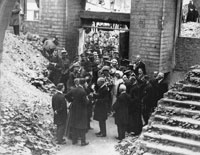
The Belgian King and Queen visit the remnants of the Louvain library, once one of the world's greatest, 19 June 1919
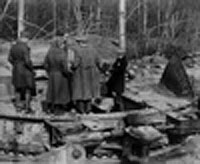
President Wilson inspects what is left of Big Bertha. The German artillery piece was the largest in World War I.
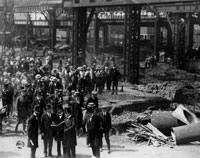
At Marchinnes au Pont (now part of Charleroi), Belgium President Wilson views war damage, 19 June 1919
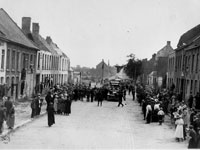
President Wilson visiting a destroyed village in Belgium, 18 June 1919
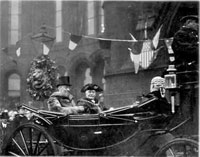
President Wilson in France

President Wilson views what is left of
Ypres, Belgium, 18 June 1919
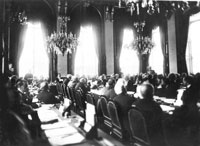
Fourth Plenary Meeting of the Paris Peace Conference
at the Quai d'Orsay, 11 April 1919

Peace Conference in session
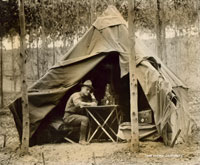
Eddie Jackson in a tent
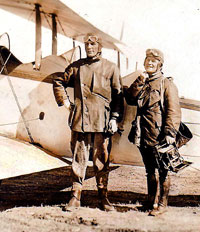
Eddie Jackson stands by his plane
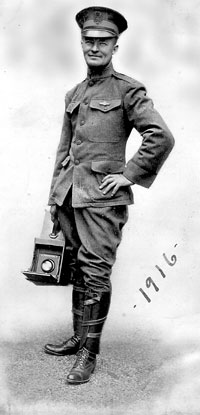
Eddie Jackson in his army uniform
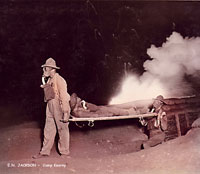
Gas attack practice at night, Camp Kearney, California
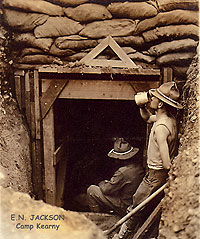
Bunker Life, Camp Kearney, California
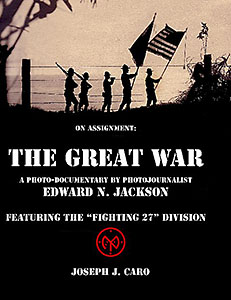
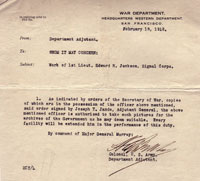
Letter authorizing Eddie Jackson to take photographs for the army
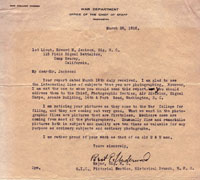
Letter complementing Eddie Jackson on his photographs of Camp Kearney, California
Check out a slideshow of Jackson photos on YouTube.